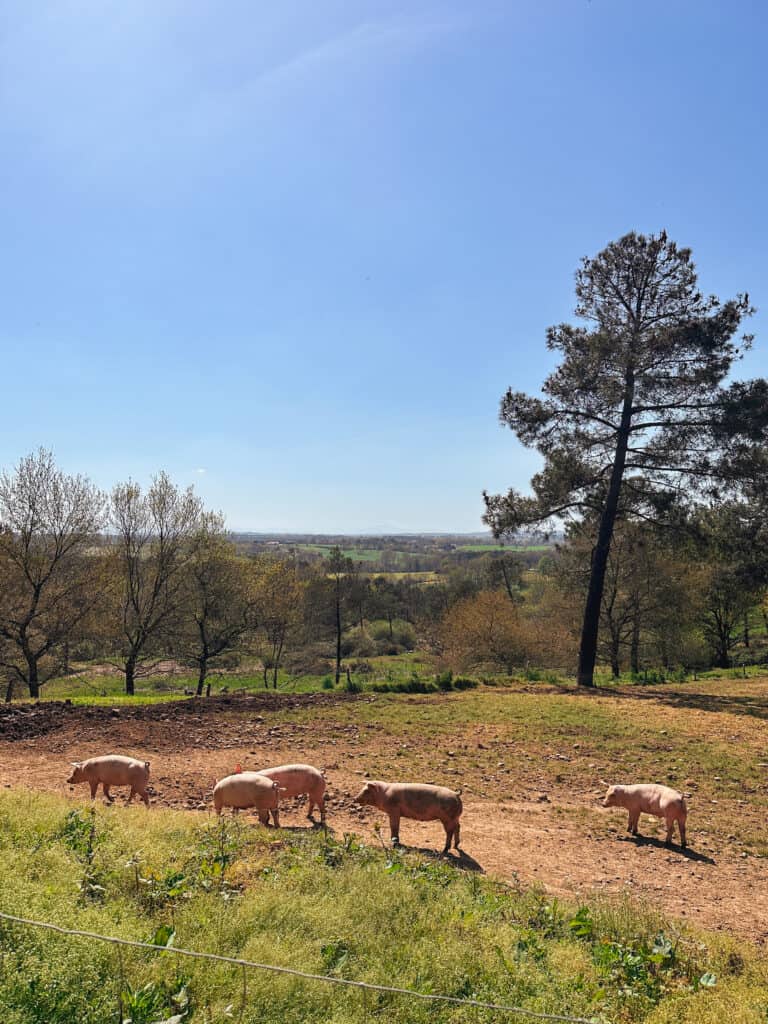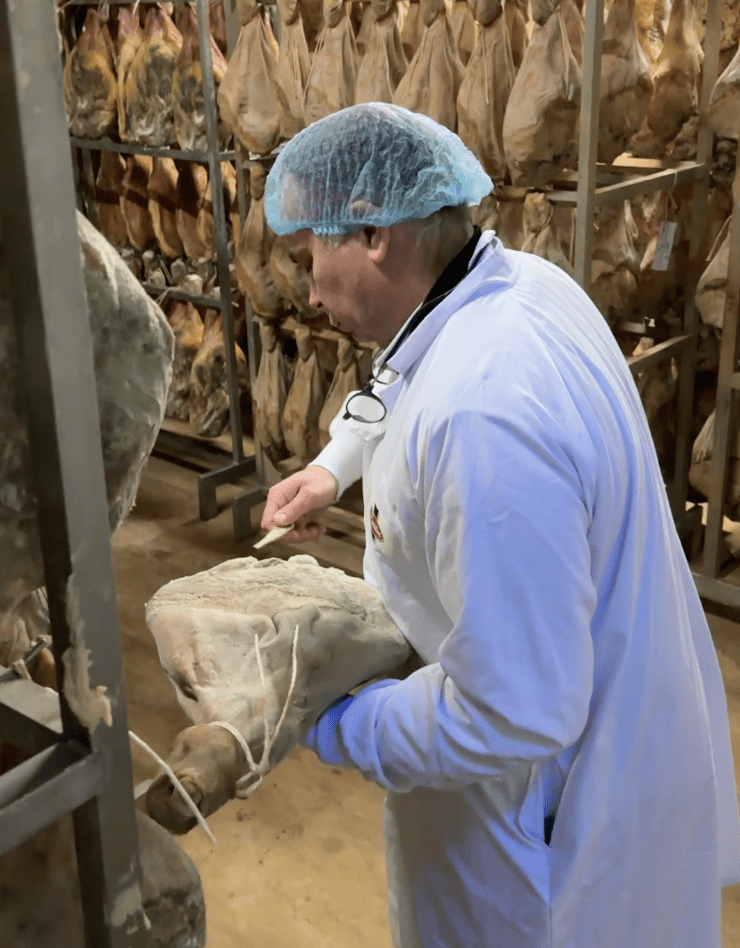
Many cultures have their own take on the cured pork leg (aka ham). In Spain, they have Jamón Ibérico and Jamón Serrano among others, in Italy they have various prosciutti, and in France, they have Jambon de Bayonne. While these hams all have differences in the way they are produced, there are two ingredients that remain the same: pigs and salt.
Last week I had the opportunity to visit Bayonne and trace Jambon de Bayonne—which has a PGI (Protected Geographical Indication) designation—from pig to plate. I saw where the pigs are raised, visited the saltern where the salt comes from, and toured a production facility where raw legs are transformed into delicious cured meat.


In order to be called Bayonne ham, the ham must be produced in the Adour Basin in Southwest France with both pigs and salt that come from the region, giving Bayonne ham a true taste of place. Bayonne ham can be traced to 950 pig farms and 39 livestock producers. The farm we visited raises around 2,800 pigs per year, all of which are used for Bayonne ham—well the back legs of the pig, anyway. These pigs have access to the outside all year-round and are only given antibiotics in the event of a serious infection.


The other key ingredient is the salt used to cure Jambon de Bayonne. All Bayonne ham is made with Salies-de-Bearn salt that comes from the Adour basin. The salt is made by pumping in water from a nearby spring and heating it in salt pools to evaporate the water and produce salt crystals which are then hand harvested with nets. The salt concentration of the spring water is 300 grams per liter, 10 times higher than sea water.
The water is heated to 181.5 degrees Fahrenheit and it usually takes a month before crystals can be harvested, but the time depends on the weather conditions. The facility I visited produces 16-1800 tons of course salt and 8-10 tons of fleur de sel. Around 80 percent of the salt is used in the production of Bayonne ham.
There are 23 makers of Jambon de Bayonne, the facility we visited was the smallest of the five big producers. From start to finish the ham will lose 30 to 35 percent of its weight. On average the aging process takes 9 to 12 months, depending on the size of the ham and the fat content. The hams are then accredited, registered, and checked repeatedly before being judged by professional testers to ensure the correct flavor and texture.
These are six steps every Bayonne ham must go through before receiving the stamp of approval:


STEP 1: Salting – Whole, fresh hams are rubbed with salt from a spring in Salies-de-Béarn, which also has a PGI. Hams are salted for anywhere from 10-20 days depending on weight, and are individually probed with a salt barometer before moving onto the next step. The salt room has a humid and meaty aroma.


STEP 2: Resting – The hams are hung in a resting chamber, known as a souillarde (regional term for a back kitchen), which allows winter conditions to be imitated. This first room is cool with lots of airflow. The goal of this stage is to stress the ham to lose as much moisture as quickly as possible.


STEP 3: Drying – Next hams move to the drying room. The main difference between this stage and the previous stage is the temperature, humidity, and airflow conditions of the room. Each producer has its own special formula of conditions to create the perfect Jambon de Bayonne.


STEP 4: Pannage – Pannage is a process in which hams are coated with a mixture of lard and Italian rice flour. It moderates the rate at which the ham dries through the long maturation period. The idea is to protect the meat from too much humidity loss. In the plant we visited they said they used to do this step with a machine, but went back to doing it by hand to increase control. The skill of the ager is to know when, where, and how much of the coating to apply to the ham.


STEP 5: Maturing – This is the final aging stage where the ham will develop its flavor, aroma, and characteristic red/pink color. Again, they are paying close attention to the moisture content of each ham to determine when it is ready. The plant we visited weighed shelves daily to keep track of moisture content. From start to finish the ham will lose 30 to 35 percent of its weight as it dries out. Some other producers may use time to determine when to pull a ham, but our guide felt moisture content was a more precise way to ensure a quality product.


STEP 6: Probe Testing – Each ham is tested by an expert who will grade it and give a final approval. Testers use a small probe made of bone to pierce the ham, then smell the bone to determine the aroma and qualities. This is how they ensure no hams have gone bad throughout the aging process. In the facility we visited the probe was made of horse bone, but our guide said any type of bone would work but that it must be made of bone because bone does not have a smell.


STEP 7: The Seal – Finally the “Bayonne” seal, carrying the Basque cross or “Lauburu”, will be applied with a branding iron to all the Bayonne Hams that have passed the final “sniff test.” At the end of all this we got to put the ham through one final “taste test,” trying Bayonne ham of different ages and production methods. One of my favorites was the Label Rouge ham. Label Rouge is a French certification that means the product is of superior quality, for this ham it meant the animals were raised free-range.



